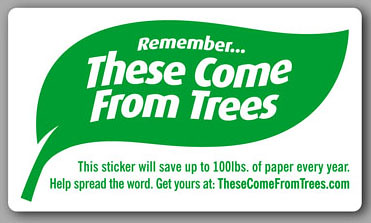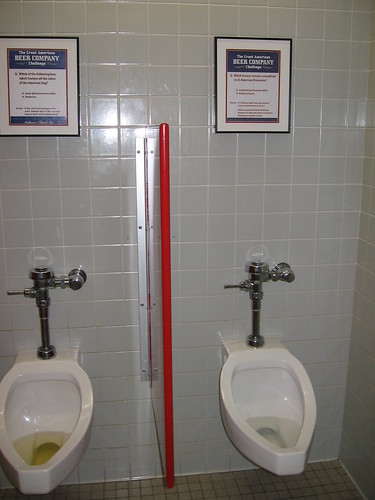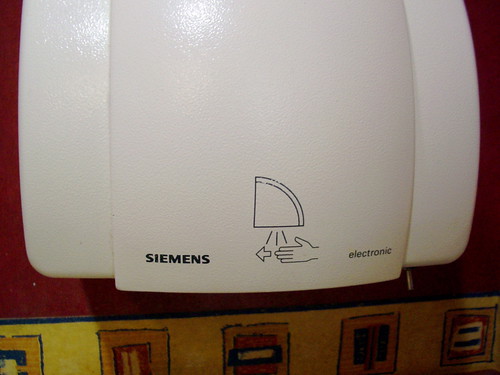"Why not make the graphic downloadable? Then any schmo like me can print them off at home on a standard set of Avery labels from Staples (or wherever).
It'd only take a few minutes to set it up for easy home printing and would save everyone some money and time."
Exactly. If indeed this project is not-for-profit, and the point is solely to spread the idea as quickly and broadly as possible, why not enable print-from-home? It's a fantastic question, Doc.
The answer lies in the whole concept of win-win "costless conservation." That is, when conceiving of the product that could hit all the requirments necessary to make sure all stakeholders in this would win (paper towel users, environmental crusaders, and bathroom owners), we had to test, test, and test again to make sure the only stakeholder bearing the cost here was the paper towel producer.
We actually initially used Avery labels to do the prototype of the sticker. And the fact that we could do it, meant that anyone else could. So we were excited that this could help spread the idea quicker.
But while we were thinking through the full lifecycle of the sticker, we hit on "hey, bathrooms get cleaned. These things need to stand up to cleaning solvent. We should check that."
 Well, we broke out the bottle of Simple Green, and gave the paper towel dispenser a squirt, and proceeded to wipe that sucker down. And as we wiped across the sticker, sure enough, the HP InkJet ink was no match. In fact, neither was the initial set of stickers we got from Contagious Graphics , the company that makes the stickers. We have 500 of our initial label run that we can't deploy, because their ink would smear when cleaned. The good news is, the second revision of the stickers, which are now laminated, stand up to cleaning.
Well, we broke out the bottle of Simple Green, and gave the paper towel dispenser a squirt, and proceeded to wipe that sucker down. And as we wiped across the sticker, sure enough, the HP InkJet ink was no match. In fact, neither was the initial set of stickers we got from Contagious Graphics , the company that makes the stickers. We have 500 of our initial label run that we can't deploy, because their ink would smear when cleaned. The good news is, the second revision of the stickers, which are now laminated, stand up to cleaning.However, the reason why this is important, is because the bathroom owner is just a part of this project as the label sticker. She's the one who decides whether it stays or goes. And if the ink is smeared, it ceases to provide value to that bathroom owner, and simply becomes another bit of graffiti for that poor business owner to deal with. And that is the opposite of the win-win proposition we're trying to achieve here.
So, as of now, in that we wouldn't want the "These Come From Trees" concept associated with stickers that degrade and are ugly, we aren't offering the image for download and self-print.
 However, what we are doing is releasing the "These Come From Trees" design and slogan under a Creative Commons attribution license.
However, what we are doing is releasing the "These Come From Trees" design and slogan under a Creative Commons attribution license.And we've notified Contagious Graphics that anyone can email them (paperlabels [at] contagiousgraphics [dot] com) and order the 2/19/07 proof version of the These Come From Trees graphic, in any quantity (their minimum order is 500 pcs), so long as they are laminated, and the 3" x 1.5" size.
Right now, the only reason why we're selling the labels is because not everyone may be excited about shelling out $120 for 500 stickers just yet. We're hoping that you order 20, 50, or 100 to start, and once you try it out, you realize how many you can put to work (I'm amazed when I find that I've put up 10 in a day, but it happens!), and call up Contagious Graphics on your own to get a big ol' order.
All we ask is that you post picture on Flickr, and tag them "tcft" and report back on your successes!
UPDATE: Henriette points out that I should be more specific about the Creative Commons license. The slogan and image can be used for anything non-commercial with attribution. Go forth and have fun with the slogan and image!















